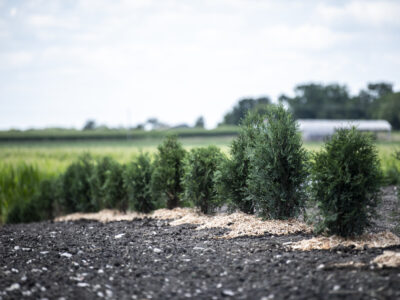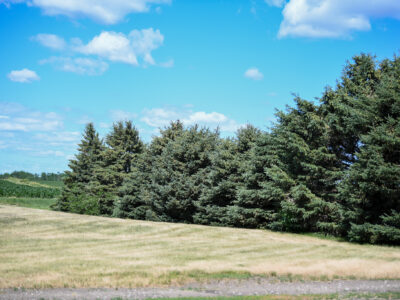Thinking about planting trees this spring? Here are some must-have tips to make sure your tree planting is successful.
The first step is to assess your site and determine your goals. Next, it is important to consult with a professional landscaper and have them put together a plan for your site. For a tree planting to succeed, it is critical to have the right plan in place from the beginning. By working through the Green Farmstead Partner program, the cost of the consultation with the landscaper and plan design is covered by the Coalition to Support Iowa’s Farmers (CSIF).
To get started on designing a tree planting, call the Coalition at 800-932-2436. To locate a nursery professional participating in the Green Farmstead Partner program in your area, visit www.supportfarmers.com/nurseries.
Now, if you’re ready to plant trees this spring – whether you plan to plant them yourself or hire a landscaper to do it – here are a few expert tips to help ensure the success of your project.
Site Preparation
When planting trees, a critical step is proper site preparation. Construction often creates compaction in the areas where trees should be planted for a windbreak. If compaction isn’t addressed, it will lead to poor drainage and tight soils that won’t allow roots to properly grow and support the plant.
To properly prepare the site:
- Deep till the area to be planted
- Disc/cultivate the area to a level surface
- If grass or weeds establish prior to planting the trees, kill the vegetation
Watering
After the trees have been planted, watering is very important. The rule of thumb is 1-inch of water every 7 to 10 days, including rainfall. Keep in mind that different soils hold moisture differently. For example, clay soils hold water for longer periods of time than sandy soil and you need to water accordingly.
A good practice is to scrape back some of the mulch around the tree and dig into it with a pocket knife or trowel to see how moist the soil is before watering. Over-watering has probably caused as many deaths as under-watering. Since many of the symptoms are the same, check the soil.
There are many methods used to water trees. From placing a 5-gallon bucket with small holes that release water slowly at each tree (pictured at right), to automatic irrigation systems, there are many options. If you’re interested in an irrigation system, be sure to check with your landscaper – many of them can install a watering system for you!
Mulching
One way to help keep the soil moisture up and weeds down is to mulch around the newly-planted trees. Additionally, mulch can help prevent injury to the trunk from lawn mowers and string trimmers.
When mulching your trees, be sure to:
- Use a shredded bark mulch because as it decomposes, it will also feed the tree
- Mulch at least 6 inches beyond the drip line of the crown
- Keep the mulch away from the trunk about 2 inches so rodents will not nest there and eat the tender bark
- Make the mulch 2-to 4-inches deep
An alternative to mulch is landscape fabric. If you decide to use fabric, be sure that water can infiltrate it (do not use plastic, as it is very important that water and air can infiltrate the soil).
Staking
Windbreak and heavy, balled trees do not need to be staked. However, you may want to stake bare-root or container-grown trees over 6-feet tall that have a dense vegetative crown (e.g. they are top heavy). Leave stakes in place for only a year or two – just long enough for the roots to get established.
Use a flexible 1-to 2-inch banded material to attach the tree to the stake (strips from an old inner tube or even old panty hose). Do not use wire around the trunk! Your tree should be able to move slightly so that it develops trunk strength, but not so much that the tree begins to lean.
Fertilizing
Although fertilizing is generally not needed, you may gain some growth opportunities if you fertilize your trees. If you do plan to fertilize, it is good to use a well-balanced fertilizer. A slow-release fertilizer would also be advised. Consult with your landscaper to discuss options.
More Information
For additional tips and advice specific to your farm, be sure to consult with a landscaper participating in the Green Farmstead Partner program. To find one near you, visit www.supportfarmers.com/nurseries. Or call the Coalition to Support Iowa’s Farmers at 800-932-2436.



